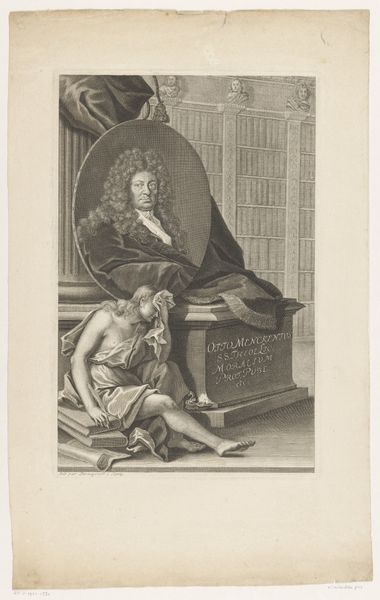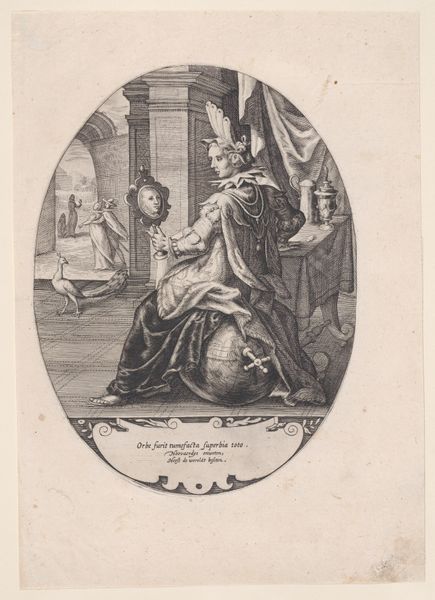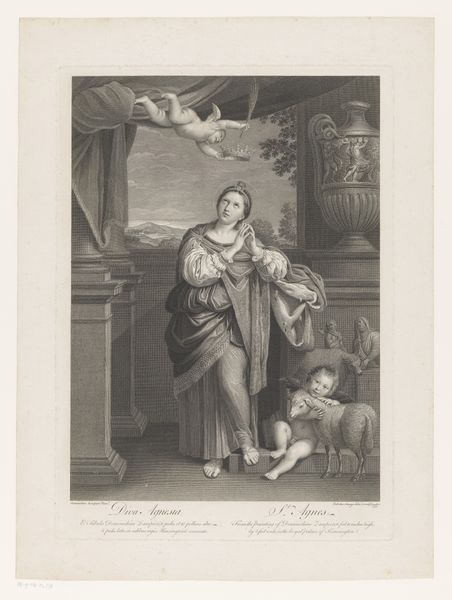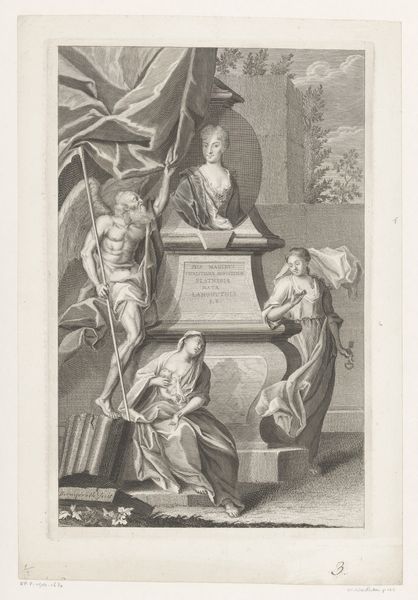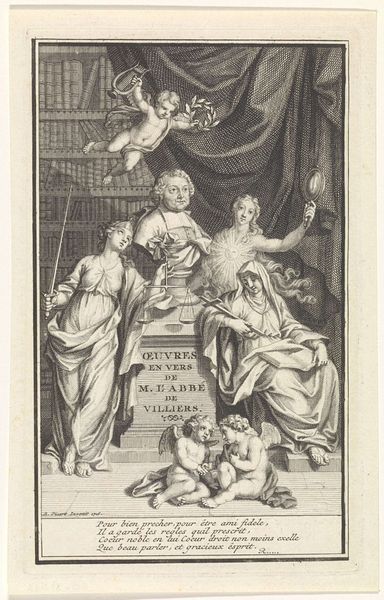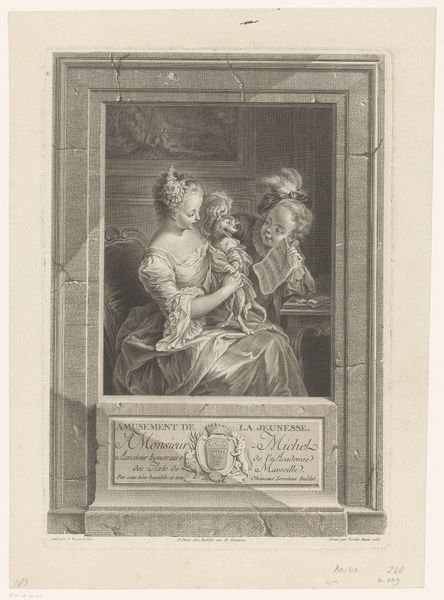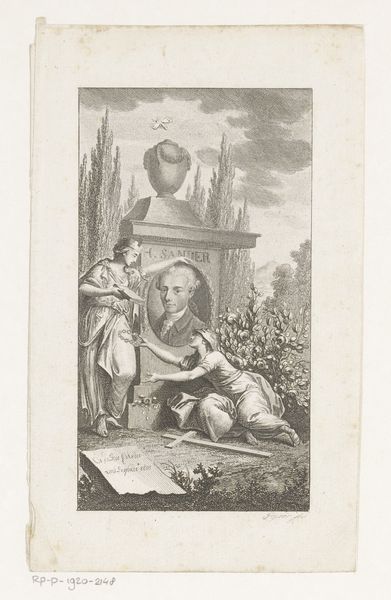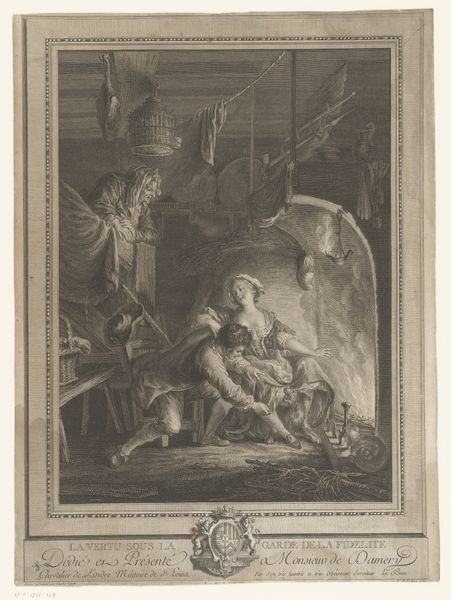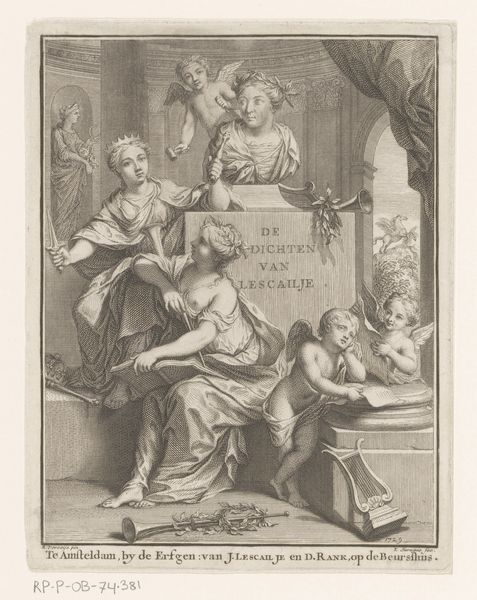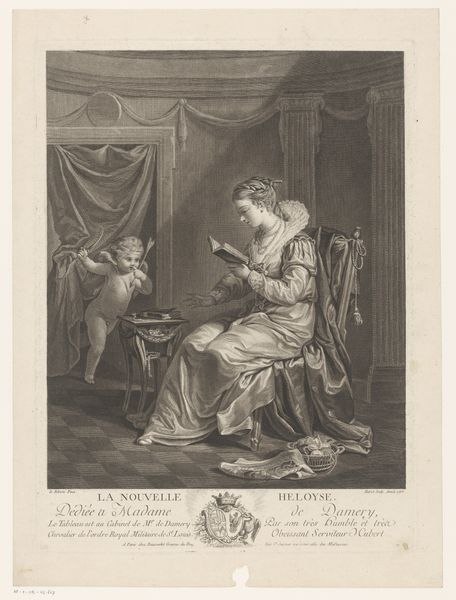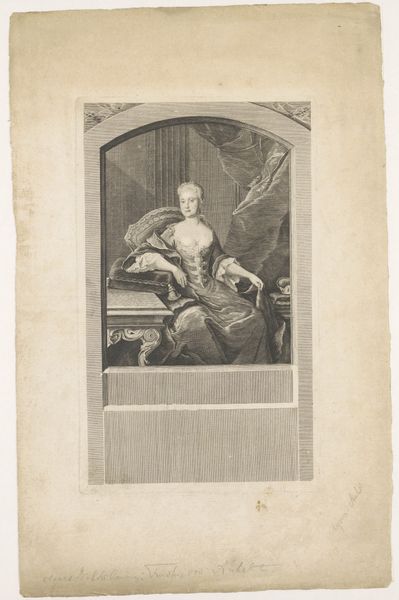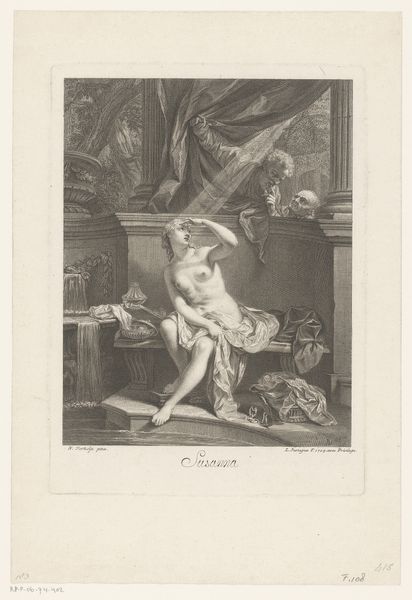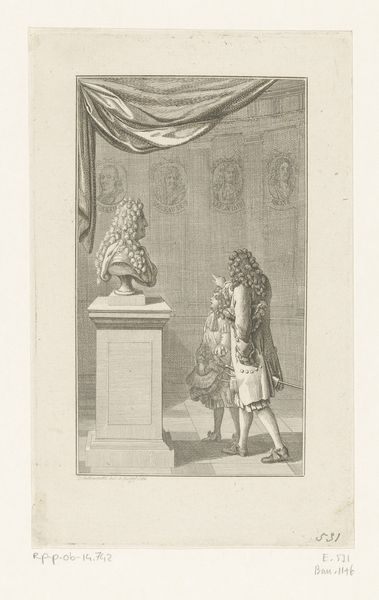
engraving
#
portrait
#
baroque
#
figuration
#
line
#
history-painting
#
engraving
Dimensions: height 293 mm, width 200 mm
Copyright: Rijks Museum: Open Domain
Curator: This engraving, held at the Rijksmuseum, is a portrait of Johanna Trier by Martin Bernigeroth, and dates from sometime between 1709 and 1733. Editor: It's quite striking! The allegorical figures create a very somber, almost mournful tone, don’t you think? There's a real sense of gravity despite the baroque embellishments. Curator: Indeed. Considering Johanna Trier's biography might help us unpack this. She was a prominent woman of her time, and these symbolic elements would certainly have resonated within the socio-political contexts of her life. We must examine it with the lens of gender and class. Editor: The iconography is definitely dense. I'm drawn to the figure with the veil and cross—what do you make of her placement and symbolism in relation to the portrait itself? Curator: This figure, weeping before the epitaph, almost certainly symbolizes faith and remembrance. It situates Johanna's life within a narrative of piety, while the child likely embodies legacy. It speaks to a very constructed ideal of womanhood. The engraver employs familiar symbols that speak across time. Editor: Absolutely, it's a deliberate curation of image and legacy. The line work is also very meticulous; you can see the incredible detail Bernigeroth achieves. How would contemporaries have read this combination of realism and allegory? Curator: They were trained to read those allegorical figures in reference to Johanna Trier and what she represented. It served to reify very traditional ideas about women and religion. The composition reinforces patriarchal narratives. Editor: Right, but also consider how these elements were specifically chosen and employed to construct, reinforce, or perhaps even subtly subvert cultural norms of her time. It makes us wonder about her real social agency and how that translated into portraiture. Curator: A valid point! These images were not merely mirrors but rather instruments, designed to negotiate a precarious social landscape. Thanks for sharing your insight! Editor: And thank you for placing the symbolism into context.
Comments
No comments
Be the first to comment and join the conversation on the ultimate creative platform.
